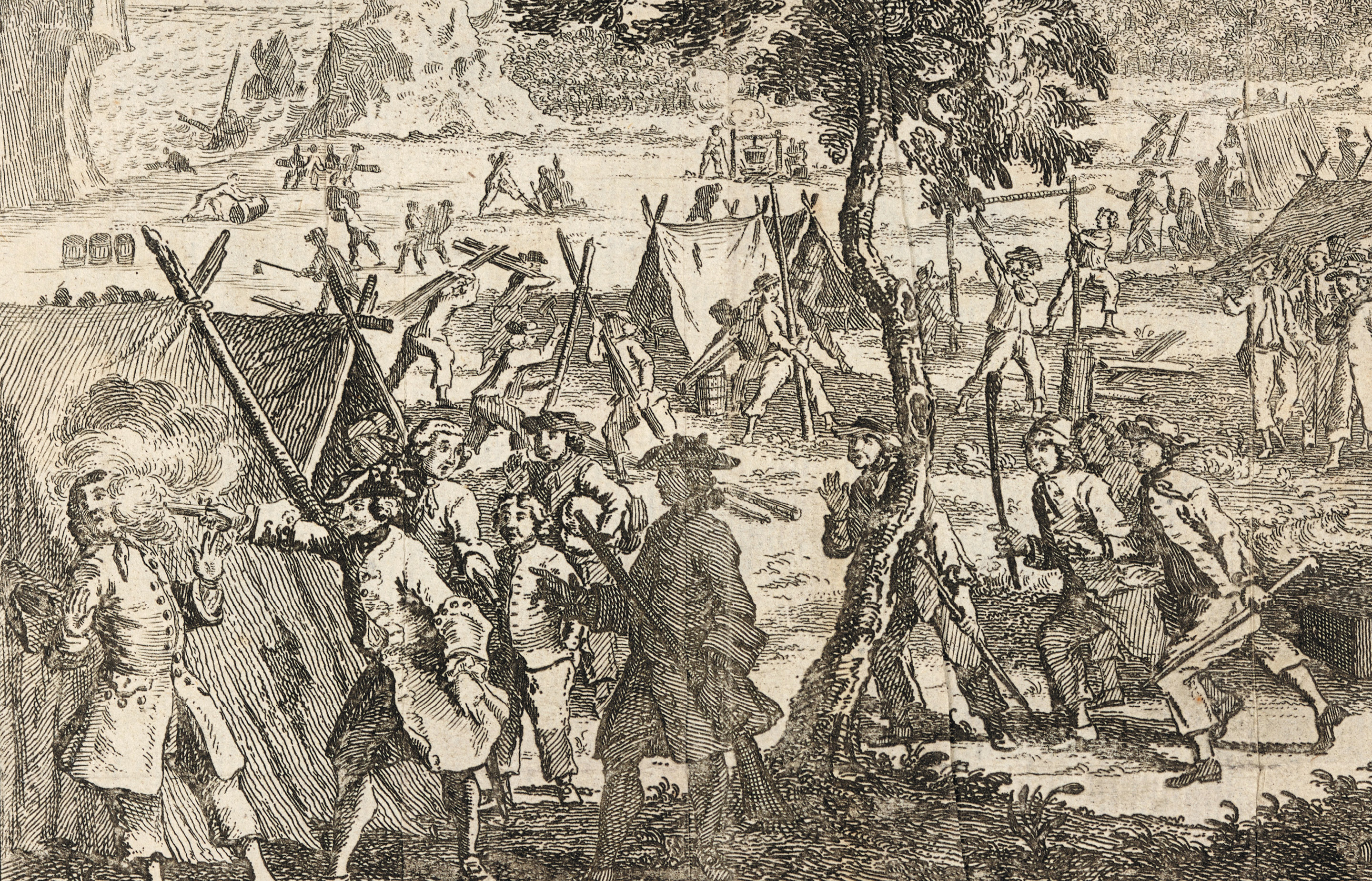The Wager
David Grann ’89 seeks truth in a tale of shipwreck, mutiny and murder in the 18th century.
The only impartial witness was the sun,” begins the latest book by New York Times bestselling author David Grann ’89. Released in April, The Wager: A Tale of Shipwreck, Mutiny and Murder is the culmination of years of research transmuted into Grann’s brand of gripping, polished storytelling that makes reality sound like fantasy.
The Wager was a British Royal Navy warship that set off in September 1740 from England as part of a squadron of five warships with a secret mission to capture a Spanish galleon filled with treasure. The Wager was believed to have been lost in May 1741 after the ships became separated during a battery of severe storms near Cape Horn at the southern tip of South America.
In reality, the Wager had wrecked on a desolate island off the southern coast of Chile, and the 145 survivors among the crew’s original 250 men had spent several months in chaos. Grann says, “The British naval officers and crew descended into a real-life Lord of the Flies. There were warring factions, mutiny, murders, and, for good measure, cannibalism.”
Then in January 1742, something resembling a boat—built partly from scraps of the Wager—washed up on the coast of Brazil nearly 3,000 miles from where the Wager wrecked. Thirty crew members had traveled for more than three months and were barely alive.
They were received as heroes until, six months after that, an even scrappier ship washed up on the coast of Chile with three additional Wager crew members, including Captain David Cheap, who said the 30 who preceded them to shore were mutineers.
The first group countered with their own accusations, and the Admiralty, a department of the U.K. government responsible for the command of the Royal Navy, brought key players to a court martial to try to untangle the truth six years after the Wager had first set sail.
Grann ultimately structured the book’s narrative around the accounts of three individuals—Captain Cheap, gunner John Bulkeley and John Byron, who would become the grandfather of poet Lord Byron.
“They had very competing perspectives, came from different elements of society with different churning ambitions and dreams, and each one of them was shaping the story,” Grann explains. “In many ways, they’re not always inventing things, but in their own accounts they shade certain facts or leave out certain things.”
This tendency is not unique to these men, Grann points out. Rather, it points to a larger facet of human nature. “You start to see the way we all tend to tell stories. We shape them, we edit them, we revise them, hoping to emerge as the hero of them, to live with what we have done or haven’t done.”
‘We Tell Ourselves Stories’
Several factors piqued Grann’s interest in the story after he stumbled upon a written account by John Byron, who joined the Wager as a midshipman at just 16 years old and was 22 by the time he and several other survivors made it back to England and faced judgment.
“I’ve always been fascinated by mutinies,” Grann explains. “What causes members of a military organization, whose mission is to impose order, to suddenly disorder? Are they extreme outlaws or were there circumstances that justify their rebellion and make it even noble?”
Grann also notes parallels between themes of almost 300 years ago and today. “I always liked Joan Didion’s line ‘We tell ourselves stories in order to live,’” he says. “But if these crew members failed to tell a convincing tale, they could be literally hanged. A war ensued over the truth, with disinformation and allegations of so-called ‘fake news.’ And, just like today, there was also a great battle over who would tell the history, and efforts by those in power to erase the scandalous truth.”
Robert Evans, CEO from 1967 to 1974 of Paramount Studios, which happens to be a distributor of an upcoming film based on one of Grann’s books (more on that later), is credited with the saying, “There are three sides to every story: your side, my side and the truth. And no one is lying. Memories shared serve each differently.”
While Grann says the basic facts of what happened after the Wager shipwrecked are generally agreed upon, he opens the book with the explanation that he tried to gather all the facts and present all sides of the story to let the reader “render the ultimate verdict—history’s judgment.”
Grann is no armchair author. He spent three weeks on the island where the crew wrecked, which is now known as Wager Island. He explored the Amazon rainforest while writing The Lost City of Z: A Tale of Deadly Obsession in the Amazon. He made several trips to Oklahoma while researching Killers of the Flower Moon: The Osage Murders and the Birth of the FBI. But much of his work is spent combing through written firsthand accounts and original sources.
During a recent video interview, he gestured behind him to indicate stacks of books and notebooks filling his office floor like miniature skyscrapers—a veritable landscape of his life’s work. “You can have a glimpse of all the research,” he says with a chuckle. “The office gets taken over and kind of turned into an archive, but I spend several years working on these books—Killers of the Flower Moon and The Wager both took about half a decade.”

